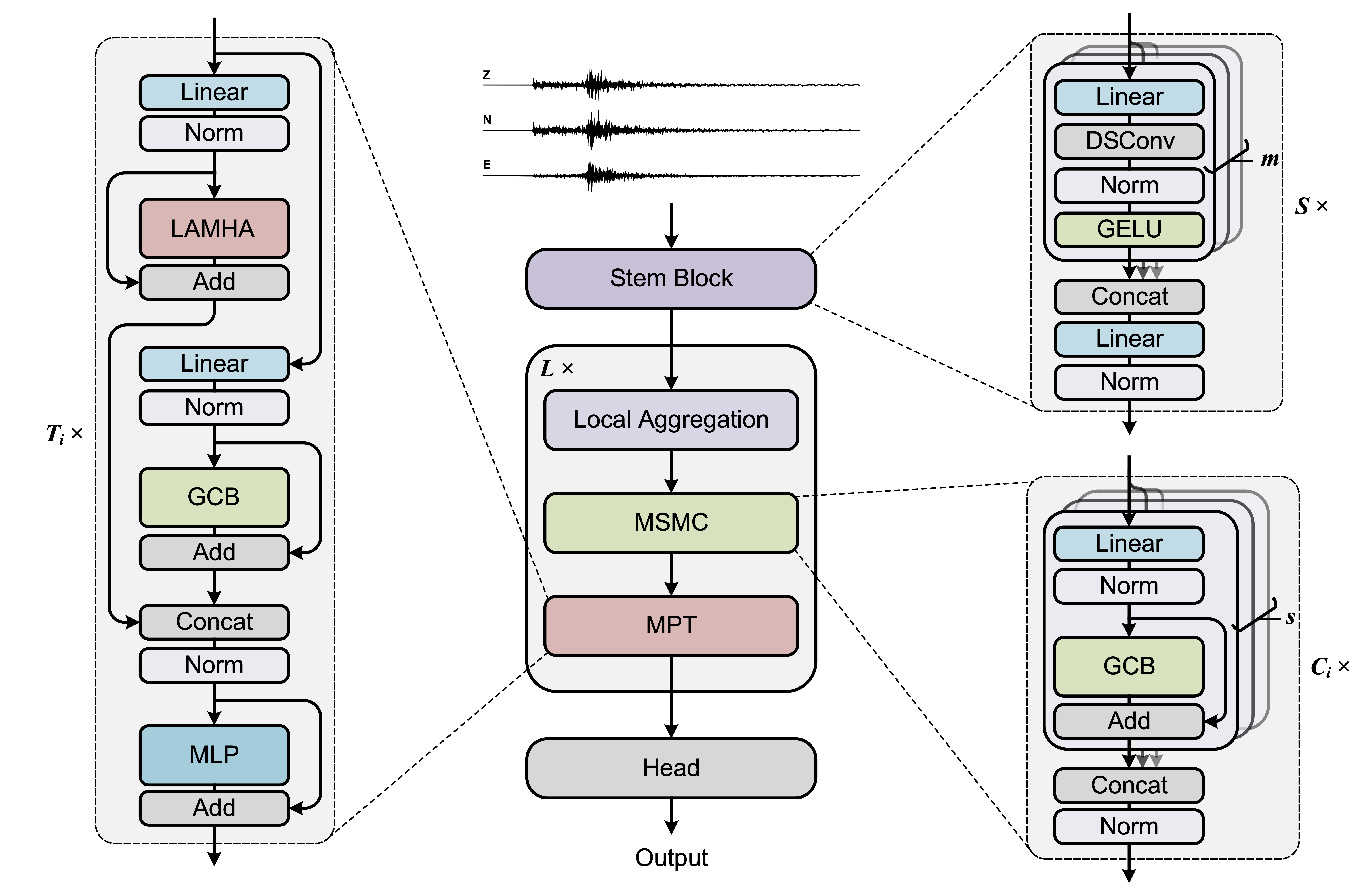SeisT: A foundational deep learning model for earthquake monitoring tasks
Seismograms, the fundamental seismic records, have revolutionized earthquake research and monitoring. Recent advancements in deep learning have further enhanced seismic signal processing, leading to even more precise and effective earthquake monitoring capabilities. This paper introduces a foundational deep learning model, the Seismogram Transformer (SeisT), designed for a variety of earthquake monitoring tasks. SeisT combines multiple modules tailored to different tasks and exhibits impressive out-of-distribution generalization performance, outperforming or matching state-of-the-art models in tasks like earthquake detection, seismic phase picking, first-motion polarity classification, magnitude estimation, back-azimuth estimation, and epicentral distance estimation. The performance scores on the tasks are 0.96, 0.96, 0.68, 0.95, 0.86, 0.55, and 0.81, respectively. The most significant improvements, in comparison to existing models, are observed in phase-P picking, phase-S picking, and magnitude estimation, with gains of 1.7%, 9.5%, and 8.0%, respectively. Our study, through rigorous experiments and evaluations, suggests that SeisT has the potential to contribute to the advancement of seismic signal processing and earthquake research.
PDF Abstract

